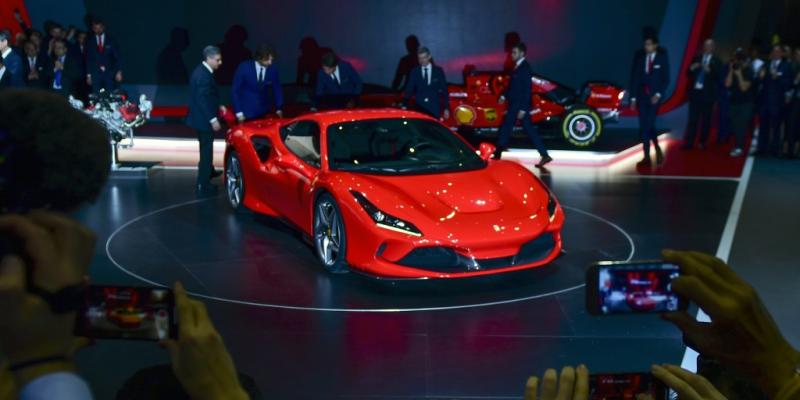Ferrari's new CEO is an electronics pioneer with a degree in subnuclear physics



Facing an industry shift of seismic proportions, Italian sports car manufacturer Ferrari has turned to the world of electronics for its new chief executive officer, naming 52-year-old Benedetto Vigna to the post, hiring him away from his current position as head of the sensors group at semiconductor firm STMicroelectronics.
The "highly unexpected" move surprised many, including industry insiders, who had expected Ferrari to draw from the luxury or consumer goods sector, if not from the automotive world.
Vigna will join Ferrari on Sept. 1, and will replace Acting CEO John Elkann, who will stay on as chairman.
"The appointment is highly unexpected and, in our view, reflects the need to 'reinvent' Ferrari and the difficulty of securing candidates willing to take on the task," Jefferies analyst Philippe Houchois said in a note to investors on Wednesday.
A subnuclear physics graduate of the University of Pisa, Vigna has been with STMicroelectronics since 1995. Among his credits, Vigna helped developed the gyro system that allows smartphones to change their displays when turned sideways.
Elkann heaped praise on Vigna in a statement, saying "His deep understanding of the technologies driving much of the change in our industry, and his proven innovation, business-building and leadership skills, will further strengthen Ferrari and its unique story of passion and performance."
Ferrari's top management has been in flux since long-time CEO Luca Di Montezemolo left in 2014. The late Sergio Marchionne, then chief executive of Fiat Chrysler Automobiles, stepped in to guide Ferrari's spin-off and October 2015 initial public offering.
After Marchionne passed away in July 2018, he was replaced at Ferrari by Louis Camilleri, who resigned unexpectedly last December, reportedly due to complications from Covid-19. While Elkann stepped in, he made it clear it would be on a temporary basis. He not only serves as chairman of Ferrari but also holds the same role with the new Stellantis, the global automaker formed by the merger of Fiat Chrysler and France's PSA Group.
Some industry experts see Vigna as a solid fit for a company that faces many of the same pressures as the rest of the auto industry, despite the unique niche that its vehicles play in — a base Ferrari, the Portofino, currently costs around $215,000. And while the automaker is both known for its high-performance sports cars and involvement in Formula One racing, it also licenses its brand name extensively for use on goods as diverse as sunglasses and laptop computers.
Ferrari is getting ready to introduce its first sport-utility vehicle, the Purosangue — which means "thoroughbred" — and it is just launching the new SF90 Stradale, its first plug-in hybrid. In April, Elkann confirmed that Ferrari will reveal its first battery-electric vehicle in 2025.
That could prove to be the most challenging program Ferrari has faced in decades. Long-time competitor Lamborghini recently announced plans to offer nothing but hybrids by mid-decade, with as many as four electric vehicles in the works for the second half of the decade.
Even conventionally powered Ferrari products will continue to use more electronics for their infotainment systems, advanced safety gear and drivetrain controls.
"We believe that (Vigna) will be able to further accelerate Ferrari's ability to remain ahead of the curve in next-gen technologies compared to the automotive sector," Pietro Solidoro, an analyst at Bestinver, wrote to investors.









I can see it now - Ferraris in space.
Uh huh. Unless he’s planning on designing a warp drive for the cars, it seems like he’s not using that fancy college education.